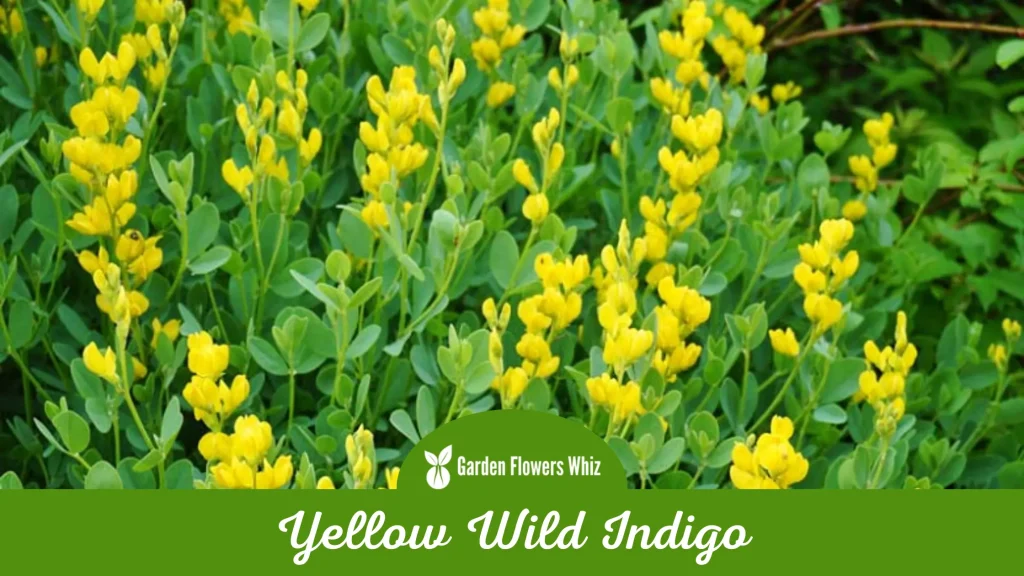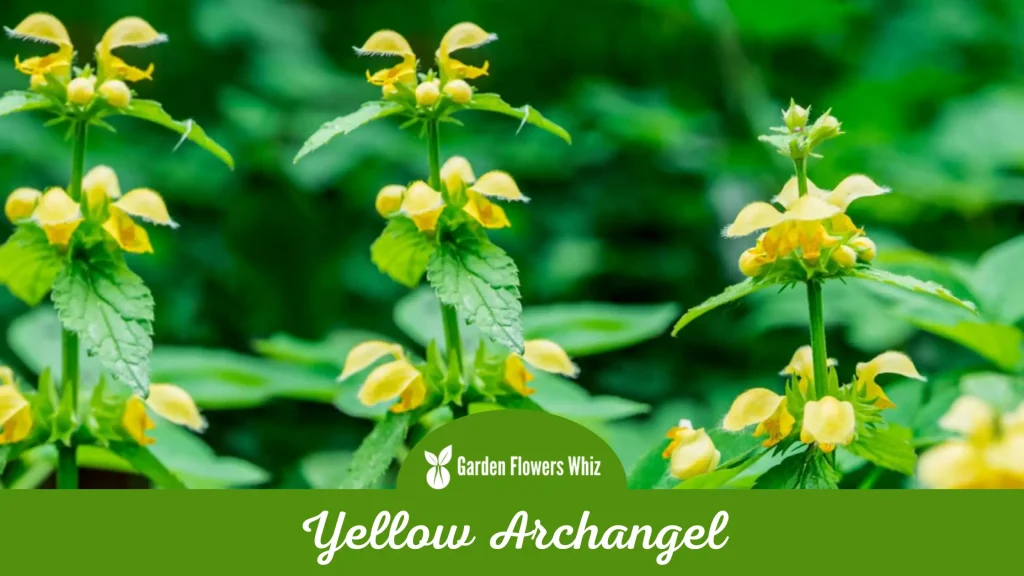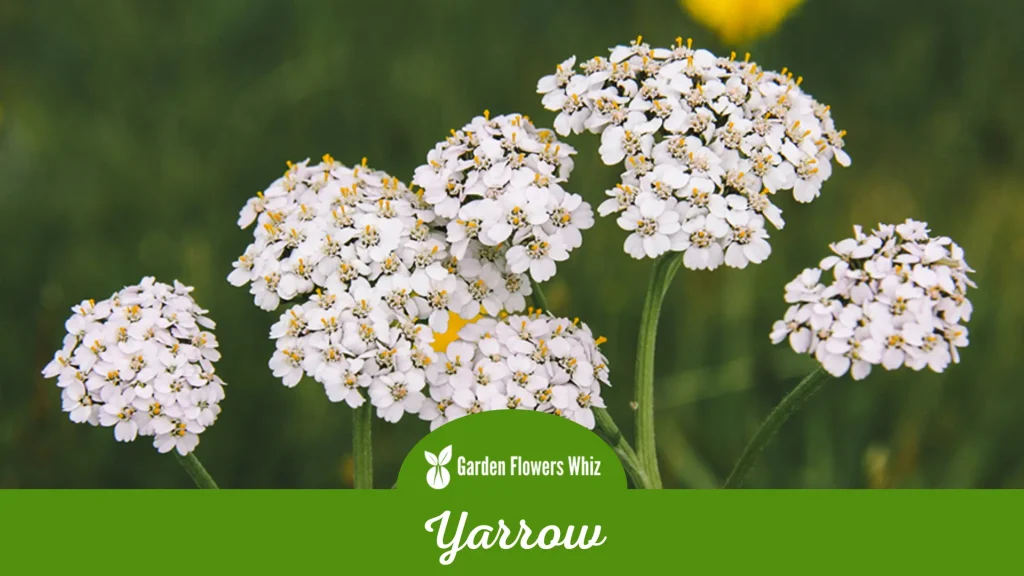The letter “Y” is not commonly associated with flowers, but there are actually several beautiful and unique species that begin with this letter.
Flowers have always held significant meaning and symbolism and discovering those that start with less common letters can be an exciting and eye-opening experience.
In this detailed guide, we will explore the world of flowers that start with “Y” and delve into their origins, meanings, and cultural significance. From the elegant yellow yarrow to the exotic yellow water lily, we will discover the hidden beauty and depth of these often-overlooked floral treasures.
Whether you are a flower enthusiast or simply curious about the diversity of the natural world, this post is sure to provide fascinating insights and spark your curiosity about the incredible variety of flowers that exist. So, let’s dive into the world of “Y” flowers and uncover their secrets!
Keep Reading:
- Flowers That Start With T
- Flowers That Start With U
- Flowers That Start With V
- Flowers That Start With W
- Flowers That Start With X
- Flowers That Start With Z
List Of Flowers That Start With Y
1. Yellow-eyed Grass

Yellow-eyed grass, also known as Xyris, is a small perennial plant that belongs to the family Xyridaceae. The plant is native to North and South America and typically grows in wetlands or swampy areas.
The yellow-eyed grass gets its name from its distinctive yellow flowers that bloom in the spring and summer months. The flowers are usually small and have a distinct brown center with bright yellow petals that surround them.
The plant also has thin and grass-like leaves that grow in a clump. The leaves are typically green, but some species have a bluish tint to them.
The yellow-eyed grass is often used in wetland restoration projects because it can grow in very moist soil conditions.
Overall, the yellow-eyed grass is a hardy and adaptable plant that adds a touch of beauty to any wetland or garden setting.
2. Yellow Coneflower

Yellow coneflower, also known as the Grey-Headed Coneflower or the Yellow-headed Coneflower, is a popular native wildflower in North America.
The scientific name of this flower is Ratibida pinnata, and it belongs to the Asteraceae family. The plant is tall, reaching heights of up to 3 feet, and it blooms in the summer months, usually from June to August.
The flower has striking yellow petals that surround a brownish-red cone-shaped center. The center contains hundreds of small flowers that produce the seeds.
The plant prefers full sun and well-drained soils and can be found growing naturally in prairies, meadows, and along roadsides. The Yellow coneflower is an attractive plant that is a favorite among gardeners and landscapers alike.
It is an excellent choice for native plant gardens, rock gardens, and wildflower meadows. The flower attracts bees, butterflies, and other pollinators to the garden, making it an essential plant for supporting local ecosystems.
Additionally, it has many medicinal properties and has been used for centuries to treat various ailments. Its beauty, adaptability, and versatility make the Yellow coneflower a popular choice for gardens and landscaping projects.
3. Yellow Wood Sorrel

Yellow Wood Sorrel, scientific name Oxalis stricta, is a perennial flowering plant in the family Oxalidaceae. The plant is native to North America and can be found in fields, lawns, and other open areas.
The leaves of Yellow Wood Sorrel are trifoliate, and each leaflet has a heart-shaped outline. The flowers are small and bright yellow with five petals and are held on stems that are taller than the leaves.
The blooms often open in the morning and close at night, and the plant produces small capsules that contain the seeds. However, it should be noted that the plant contains oxalic acid, which can be harmful if consumed.
Overall, Yellow Wood Sorrel is a beautiful and useful plant that can add a touch of color and flavor to a garden or meal.
4. Yellow Wild Indigo

Yellow wild indigo, also known as Baptisia sphaerocarpa, is a native perennial plant commonly found in the southeastern United States. It is a member of the pea family and grows up to 5 feet tall with clusters of bright yellow flowers atop its tall, slender stems.
The flowers bloom in the late spring and early summer and are followed by inflated seed pods. The foliage is a greyish-green color, and the leaves are compound, consisting of three leaflets.
This plant is well-suited for growing in full sun and well-drained soils. Yellow wild indigo is known for its ability to fix nitrogen in the soil, which makes it an excellent choice for use in restoration projects, as well as in home gardens.
Additionally, it is an important food source for various species of butterflies and bees, making it a valuable addition to pollinator gardens.
Overall, yellow wild indigo is a beautiful, low-maintenance perennial that is sure to add a bright pop of color to any garden or landscape.
5. Yellow Flag

Yellow flag (Iris pseudacorus) is a perennial plant known for its striking yellow flowers that bloom in early summer. The plant is native to Europe, Asia, and North Africa and has been introduced to many other parts of the world as an ornamental plant.
Yellow flag grows in wetlands, marshes, and along riverbanks and thrives in moist to wet soil. The flowers of the yellow flag are bright yellow with three large petals and three smaller sepals that droop downward.
The plant’s leaves are long and sword-like, and they form clumps up to 4 feet tall. Yellow flag is an excellent plant for providing cover for small aquatic creatures, as well as being a great source of nectar for insects.
However, caution must be taken when handling the yellow flags, as all parts of the plant are toxic if ingested, and the sap can cause skin irritation.
6. Yellow-Eyed Grass

Yellow-eyed grass, or Xyris, is a genus of flowering plants in the family Xyridaceae. The name Xyris is derived from the Greek word “xuros,” which means dry, in reference to the dry habitat in which many species are found.
There are over 300 species of Yellow-eyed grass, which are native to tropical and temperate regions worldwide. The plant is typically found in wetlands, bogs, and damp meadows.
It is characterized by its bright yellow flowers that resemble stars and grow on long, slender stalks above the grass-like leaves. The flower heads are typically 1-3 inches in diameter and appear in dense clusters.
Yellow-eyed grass is an important source of food for many insects and birds, and ducks and other waterfowl consume the seeds.
7. Yellow Bell

Yellow Bell, also known as Allamanda cathartica, is a popular flowering plant that belongs to the Apocynaceae family. This tropical vine is native to South and Central America, and it’s a popular garden plant in many parts of the world due to its attractive and showy flowers.
The flowers of the Yellow Bell are bright yellow and trumpet-shaped, and they usually bloom in summer and fall. The plant can grow up to 6-8 feet tall, and it requires a warm and sunny location to thrive.
Yellow Bell is a relatively easy plant to grow, and it requires well-drained soil, regular watering, and occasional fertilization. It is often grown as a container plant or trained to climb up a trellis, fence, or wall.
However, it should be noted that the plant contains toxic compounds, and it should be handled with care.
8. Yellow Archangel

Yellow Archangel, also known as Lamiastrum galeobdolon or Yellow Dead-Nettle, is a perennial herbaceous plant that belongs to the mint family (Lamiaceae).
It is native to Europe and Western Asia but has been introduced to North America, where it has become invasive in some areas. The plant produces yellow flowers that bloom from late spring to early summer and has yellow-green, heart-shaped leaves that are often variegated.
In addition to its medicinal uses, Yellow Archangel is also popular as an ornamental plant in gardens and landscaping. Its bright yellow flowers and striking foliage make it a popular choice for borders, groundcover, and container planting.
However, its invasive tendencies mean that it should be planted with caution and carefully managed to prevent it from spreading into natural areas.
9. Yarrow

Yarrow is a beautiful flowering herb that is native to Europe and Asia but has been naturalized in many other parts of the world. Its botanical name is Achillea millefolium, and it is a member of the Asteraceae family.
Yarrow has fern-like leaves that are highly aromatic and small, tightly-packed flower heads that range in color from white to pink to yellow.
Yarrow is also a favorite among herbalists for its ability to stop bleeding and its antiseptic properties. In addition to its many health benefits, yarrow is also an attractive addition to any garden or flower arrangement.
Its delicate beauty and versatility make it a highly valued plant among gardeners and nature enthusiasts.
In Summary
In conclusion, while the letter Y may not be the most common letter in the English language, it still offers a unique array of beautiful and fascinating flowers.
From the delicate yellow yarrow to the eye-catching yellow bells, the flowers that start with Y prove that beauty can be found in even the most unexpected places.

Stacey Hernandez is a seasoned botanist with over 16 years of experience in the field. Her passion for plants and their intricate workings began at a young age, and she has since devoted her life to studying and understanding them.
Stacey’s expertise extends to a wide range of plant species, from delicate flowers to towering trees. As the founder of Garden Flowers Whiz, Stacey has created a platform for plant enthusiasts to seek guidance and advice.
Her website is a go-to resource for those seeking answers to their gardening dilemmas, whether it’s how to care for a particular plant or which species to choose for a specific climate.
